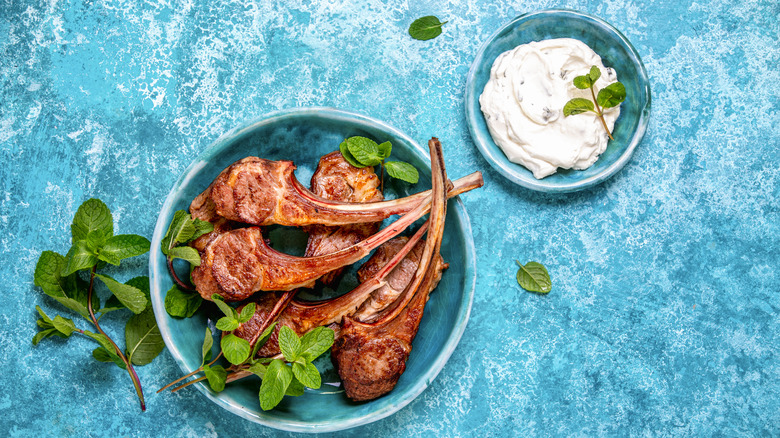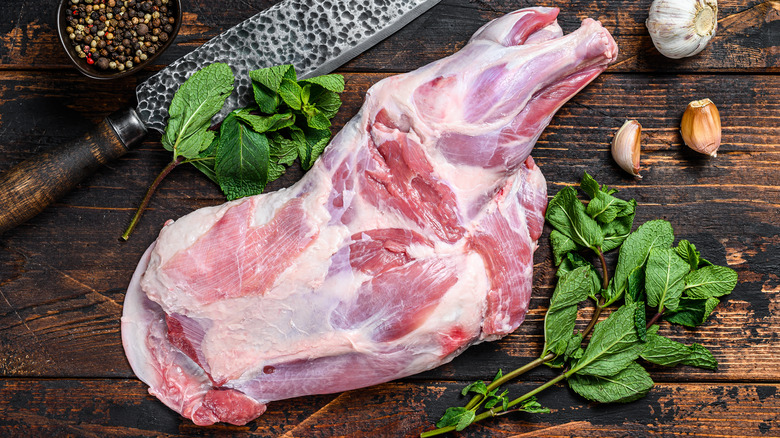The Scientific Reason Lamb Tastes Great With Mint
The smell of a juicy piece of lamb fresh out of the oven or just off the grill is enough to make any meat-lover's mouth water. Lamb is a tender, mild, and delicious red meat loaded with healthy proteins, vitamins, amino acids, and minerals (via D'Artagnan). No wonder lamb continues to be craved and savored as a staple in kitchens across the world! The many cuts of lamb create plenty of scrumptious opportunities to enjoy the flavorful meat.
And the only thing that could make lamb even more delicious is mint, either fresh or incorporated into a jelly or sauce. A common addition to lamb recipes, mint is the perfect complement for the meat. It's common knowledge, and most of us would never leave it out of our lamb dishes. But what exactly makes this combination taste so good? There's actually a scientific explanation that makes a lot of sense.
The culinary science behind lamb and mint
Everyone who loves lamb knows that mint is the perfect flavor match for the meat and wouldn't dream of leaving it out of their dishes. Culinary science on food pairings backs this up. Different flavors and aromas are created by different flavor compounds in our food. The article "Flavor Network and the Principles of Food Pairings," published in 2011 by Scientific Reports, developed a theory that two foods with the same flavor compounds or flavor compounds with similar chemical structures tend to taste really good when served together.
Cook's Illustrated applies this theory to the savory duo of lamb and mint. These two foods have flavor compounds with similar structures, which leads to complementary flavor and aroma profiles. Lamb's flavor is created by a flavor compound called branched-chain fatty acids, or BCFAs. Mint's flavor, meanwhile, is linked to its branched-chain ketones, which is less common in other herbs. These two flavor compounds are chemically similar and create aromas and flavors that delight our taste buds.
That's not all. A compound called 2,3-octanedione is stored in lamb's fat and when cooked, "chemically bridges the gap between the BCFAs and the branched-chain ketones," as Cook's Illustrated explains. Whether served with a mint yogurt, a mint relish, or mint oil, lamb is heightened by this herb.

